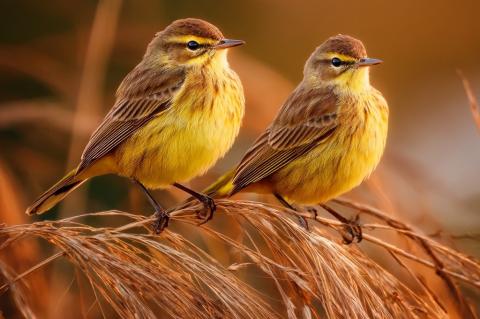Once upon a time, birders might arm themselves with a simple pad and pencil before they tromped off into the woods. When birding, you could touch the sacred, experience wonder, get lost on a loop trail. Not knowing was stimulating. With Merlin, that stimulus is gone.
Nature
 Naturalist Larry Penny Celebrated as ‘Invaluable Resource’
Naturalist Larry Penny Celebrated as ‘Invaluable Resource’Folksy music and family photos at LTV Studios Sunday added an upbeat touch to a commemoration of the life and legacy of Larry Penny, a naturalist, teacher, writer, and former director of the town’s Natural Resources Department.
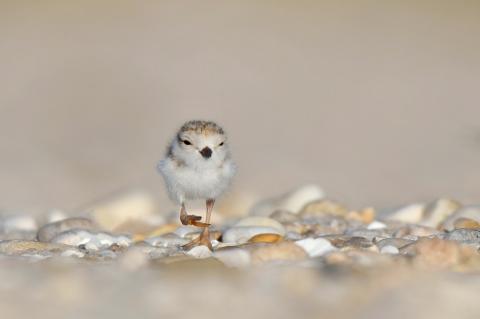 Piping Plovers: Numbers Are In
Piping Plovers: Numbers Are InCrows, foxes, dogs, trucks, truck tracks, people. Oh, and ghost crabs. These have been some of the threats to East Hampton Town’s piping plover population in 2025 (ignoring habitat loss), according to Samantha Schurr, an environmental analyst in the Natural Resources Department.
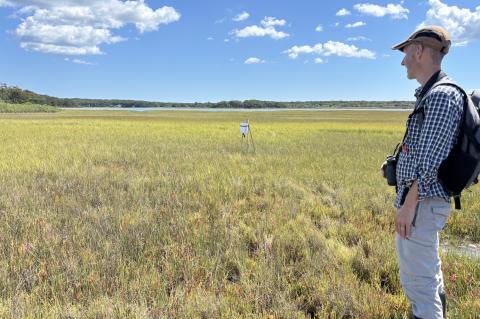 On the Wing: Magic in the Night Sky
On the Wing: Magic in the Night SkyWhile we humans are pinned down by gravity, there’s an overnight flow of birds hundreds and thousands of feet overhead using sound as their invisible traffic control system.
 Big Sea Life Chases Small, Some Years More Than Others
Big Sea Life Chases Small, Some Years More Than OthersA senior scientist spots only 20 humpback whales this season here, down from 121 at this point in 2024. But we were spoiled: Last year was an aberration.
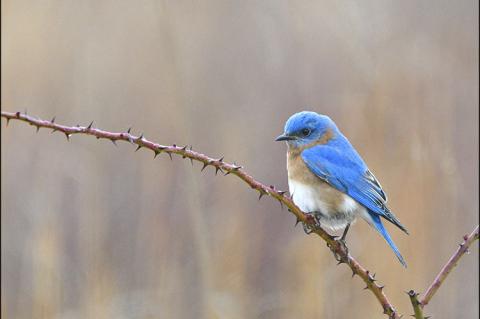 Bluebirds Thriving in East Hampton
Bluebirds Thriving in East Hampton“I think this is the most concentrated spot for bluebirds in all of New York State,” said Joe Giunta on a drizzly Saturday morning as he walked along a segment of a bluebird trail on Daniel’s Hole Road, adjacent to 600 acres of relatively open space.
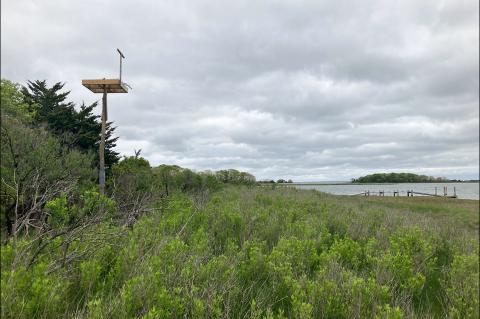 Good News and Bad for Two Osprey Pairs
Good News and Bad for Two Osprey PairsIt’s been a bad news/good news month for at least two pairs of ospreys that had nests under construction removed, one likely by a homeowner, the other by PSEG Long Island.
 White Sharks’ Return a Good Sign
White Sharks’ Return a Good SignA certain New York City tabloid did its best to sensationalize drone footage captured this month depicting a great white shark a few hundred feet off the Montauk shoreline, but the sighting is neither surprising nor cause for concern, a local expert insisted.
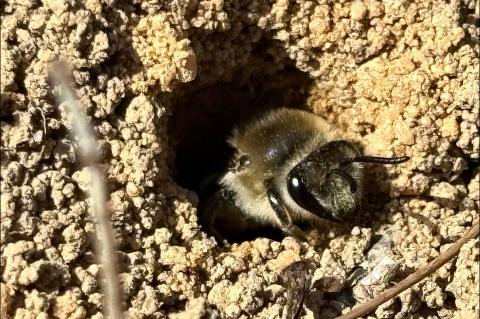 On the Wing: Early Bee Already Busy
On the Wing: Early Bee Already BusyHundreds of small mounds with holes, each the diameter of a pencil, surrounded me. Above them zigging, dark, smallish bees traced incomprehensible patterns through the air: cellophane bees.
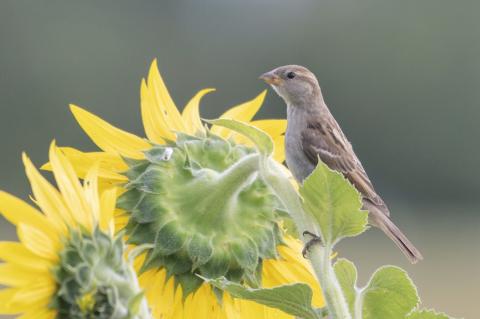 On the Wing: Love, Hate, and House Sparrows
On the Wing: Love, Hate, and House SparrowsOn the East End, we hear a lot about invasive species in the plant world, but the house sparrow was one of the original invasive species. House sparrows are bullies. They fight over dirt baths. They are nonmigratory, colonize habitat, and then profusely breed. When native migratory birds return to nest in the spring, these pugnacious birds force them away.
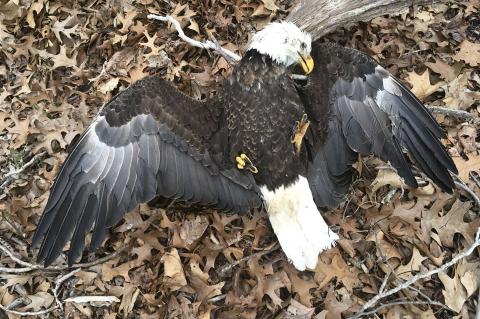 A Bad Year for Bald Eagles and Their Nests
A Bad Year for Bald Eagles and Their NestsIn March, a dead bald eagle was found below a nest in Montauk County Park, a victim of rodenticide. Another nest at the edge of Georgica Pond in East Hampton was lost when the pitch pine it was built in was removed because it had been killed by a southern pine beetle infestation.
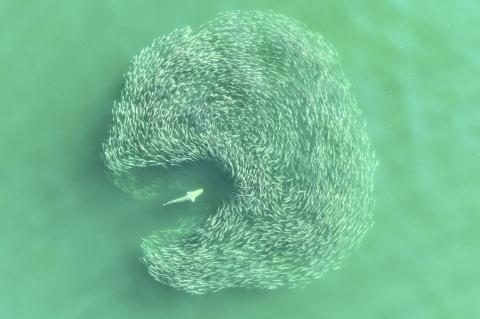 Love the Whales? Thank the Bunker
Love the Whales? Thank the BunkerIf 2023 was the year of the shark on the South Fork, with multiple sightings leading to frequent temporary beach closings, 2024 seems to be the year of the whale. Last week, for the first time ever, “we had to pull people out of the water to let a whale pass. It was only 20 feet offshore,” said Drew Smith, the head lifeguard for East Hampton Village.
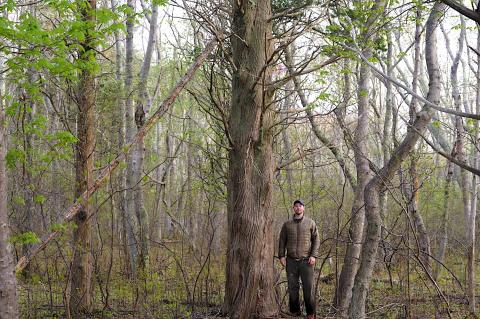 Sagaponack Cedar Withstands Ravages of Time
Sagaponack Cedar Withstands Ravages of TimeIn the middle of a swamp in Sagaponack is a remnant of colonial history, a stand of Atlantic white cedar trees, as important and ubiquitous 300 years ago as iPhones are now. In fact, what is likely the largest Atlantic white cedar tree in the state, and certainly the largest on Long Island, grows there completely unheralded.
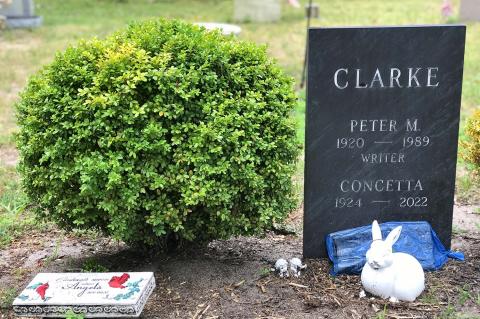 On the Wing: Birding With the Dead
On the Wing: Birding With the DeadSummer is perhaps the worst time of year to bird. You’re birding but you’re not really birding. Leave your binoculars at home. Leave your iPhone and Merlin app in the car. This is not for that. Instead, stroll through the cemetery, grow thoughtful, and let the birds, many of which will live only a few years, be your soundtrack.
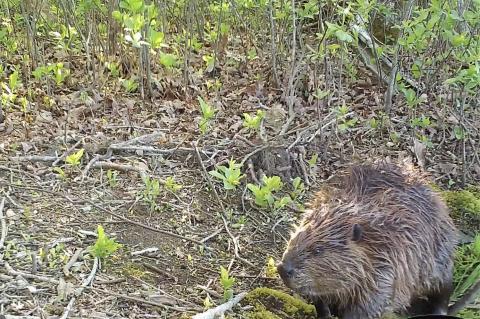 Montauk Beaver Meets Its End on Highway
Montauk Beaver Meets Its End on HighwayA beaver that likely arrived at Hither Hills State Park in the ocean surf last April and then built a lodge in a secluded part of Fresh Pond in Hither Woods was found dead on the side of Montauk Highway Tuesday morning.
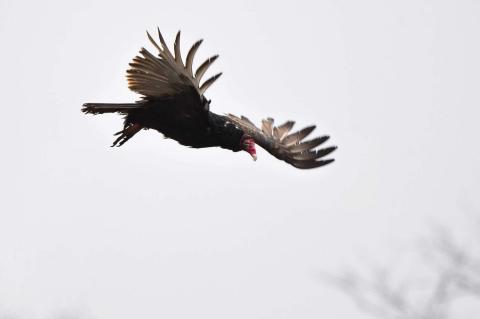 On the Wing: A Majestic Dump Dweller
On the Wing: A Majestic Dump DwellerIf given the opportunity, a turkey vulture would eat you, your kids, and your little dog, too. Other bird species may be struggling, but the turkey vulture is doing just fine eating dead things. Yes, with increasing signs that the end is nigh, the turkey vulture is a strong candidate for Bird of 2024.
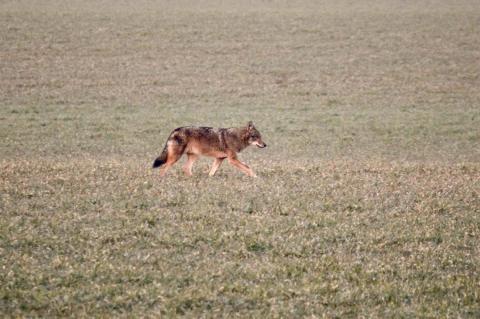 Coyotes Make Further Inroads on Long Island
Coyotes Make Further Inroads on Long IslandCoyote sightings on the North Fork this autumn and a month ago in Bridgehampton are not surprising to those who study this wide-ranging mammal. Coyotes have never bred in Suffolk County, but with one-off sightings increasing in frequency, the question isn’t if they will breed here but when.
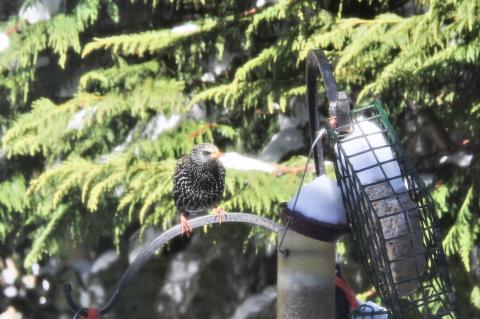 A Bird Count for Everyone
A Bird Count for EveryoneNovember is the month when a dedicated group of citizen scientists begin to count birds as part of Project FeederWatch, a Cornell Lab of Ornithology program now in its 37th year. It’s simple. Go to feederwatch.org, pay $18, learn how to report your birds, get some swag that will help you make proper identifications, and you’re on the team.
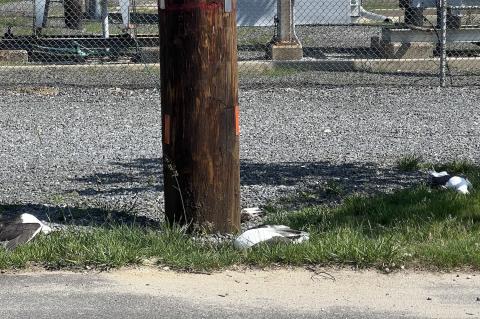 A Spate of Dead Birds In Montauk
A Spate of Dead Birds In MontaukIndustrial Road, because of its geography and development, has long been a dangerous area for birds. One woman has found 11 dead gulls near the PSEG electrical substation there since late June, and it's not just gulls that are dying.
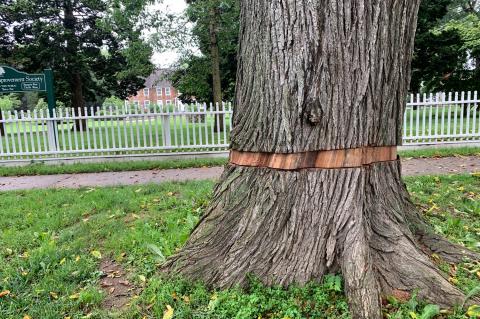 Another East Hampton Village Elm Succumbs
Another East Hampton Village Elm SuccumbsIf you’ve walked by the Ladies Village Improvement Society headquarters on East Hampton Main Street or waited at the Hampton Jitney stop in front of it, you may have noticed an elm with its bark cut away in a neat strip around the tree’s circumference. “Won’t that kill the tree?” one curious walker asked The Star two weeks ago after spotting it. The answer is yes, but it may also help save others nearby from Dutch elm disease
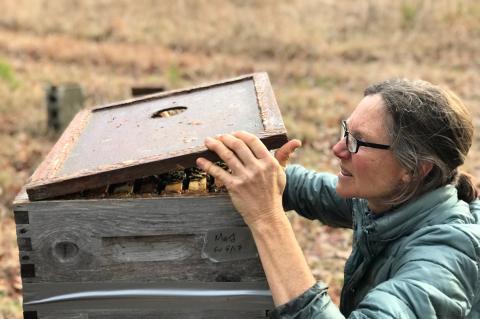 Bees Also Have Needs in Winter
Bees Also Have Needs in WinterWhile the bees are mostly hive-bound and slowed by the cold of winter, it’s not a time of rest for a beekeeper.
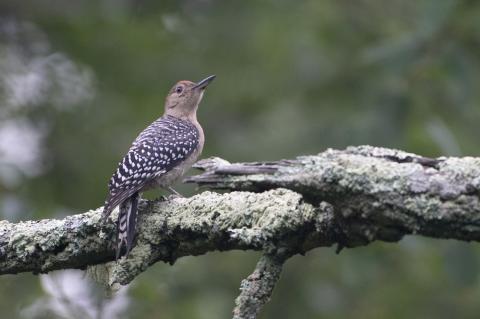 On the Wing: We Should Call It the Zebra Bird
On the Wing: We Should Call It the Zebra BirdYou don’t need to go deep into the woods to find a red-bellied woodpecker, but if you're looking for a distinctive red belly, you won't find it. Instead, its head is red, which explains why people often misidentify it as the red-headed woodpecker, which hardly shows up on Long Island.
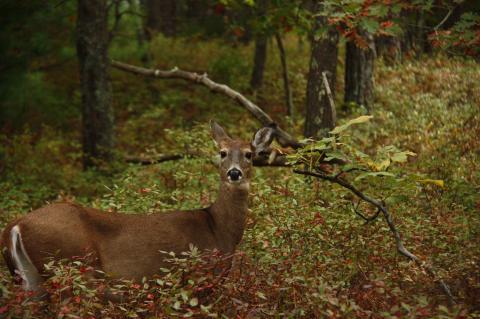 Studying the Dining Habits of Deer
Studying the Dining Habits of DeerIn an attempt to get a handle on the impacts of the region's outsize deer population, East Hampton Town established a new fenced-in deer “exclosure” in mid-October in Northwest Woods. The idea of it is pretty simple: Deer are restricted from feasting inside the fence, so that the plant life inside “can be compared to vegetation outside of it to determine the impact deer 'browse' is having.”
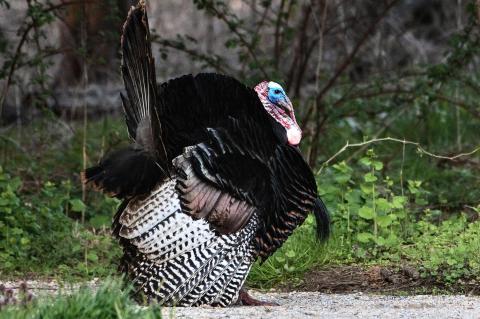 On the Wing: Turkeys, Turkeys, Everywhere
On the Wing: Turkeys, Turkeys, EverywhereIt’s hard to decouple the turkey from Thanksgiving, but long before we paired turkeys with mashed potatoes and stuffing and turned them into a national symbol, they were going about their business, hanging out in gangs, flipping leaves, and browsing the ground for nuts.
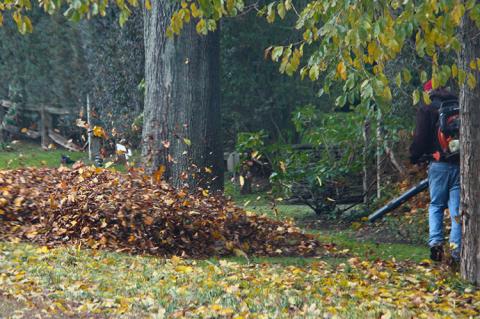 An Unhealthy Obsession With Leaf Removal
An Unhealthy Obsession With Leaf RemovalOn the South Fork, it seems the moment a leaf falls to the ground it becomes a nuisance to be blown, corralled, and carted to a landfill. But leaving at least some of those leaves be can be healthy for your lawn and your other plantings.
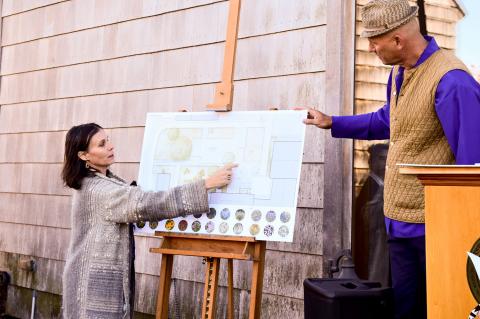 Pollinator Garden Unveiled at Town Hall
Pollinator Garden Unveiled at Town Hall“There’s trouble in paradise,” Gail Pellett of ChangeHampton said outside East Hampton Town Hall last Thursday, where a group of elected officials and residents had gathered for a ceremonial groundbreaking for a community pollinator garden that will extend a pollinator pathway that includes another garden and a wildflower meadow in progress on the campus.
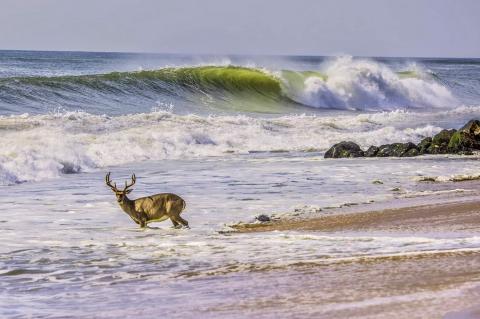 Bluetongue Virus Hits Deer Here
Bluetongue Virus Hits Deer HereBluetongue, a serious virus, has been detected for the first time in New York State deer. A cousin of epizootic hemorrhagic disease, it is spread by the bite from a midge, or no-see-um, and incubates in a deer for seven days before the animal begins to show symptoms. There is no treatment for the virus, which typically kills an adult deer within 36 hours.
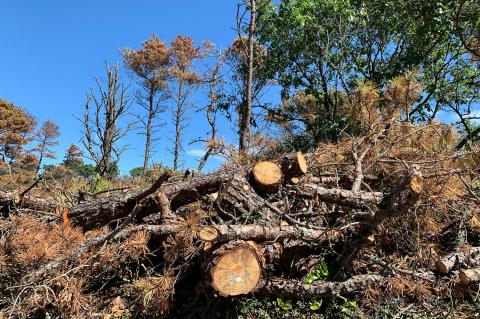 Pine Beetles Wreaking Havoc on Napeague Forest
Pine Beetles Wreaking Havoc on Napeague ForestSome 3,200 pitch pines on Napeague were being felled this week, victims of the southern pine beetle infestation that has killed thousands of trees in East Hampton Town since 2017.
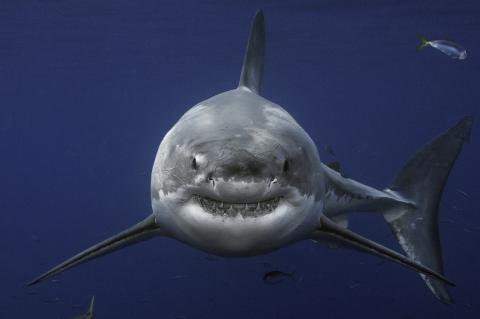 Shark Encounters Are on the Rise. Why?
Shark Encounters Are on the Rise. Why?A handful of recent shark attacks and sightings on Long Island's barrier beaches has beachgoers on edge and officials responding with red-flag beach warnings and enhanced shark patrols — but don't blame the sharks, said Greg Metzger of the South Fork Natural History Museum. They aren't here to feast on humans but on the vast schools of menhaden, or bunker, that have settled in for their annual summer residencies.
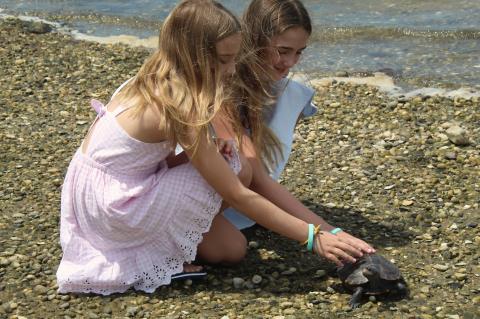 Lilly the Turtle Sets Out to Sea Four Years Later
Lilly the Turtle Sets Out to Sea Four Years LaterWhen young Ella and Gracie Wobensmith found the diamondback turtle on a Noyack Bay beach four years ago it, had serious wounds to its shell and a punctured lung. It was rehabilitated at a turtle rescue center, and this week the girls had a chance to help release it back into the wild.

